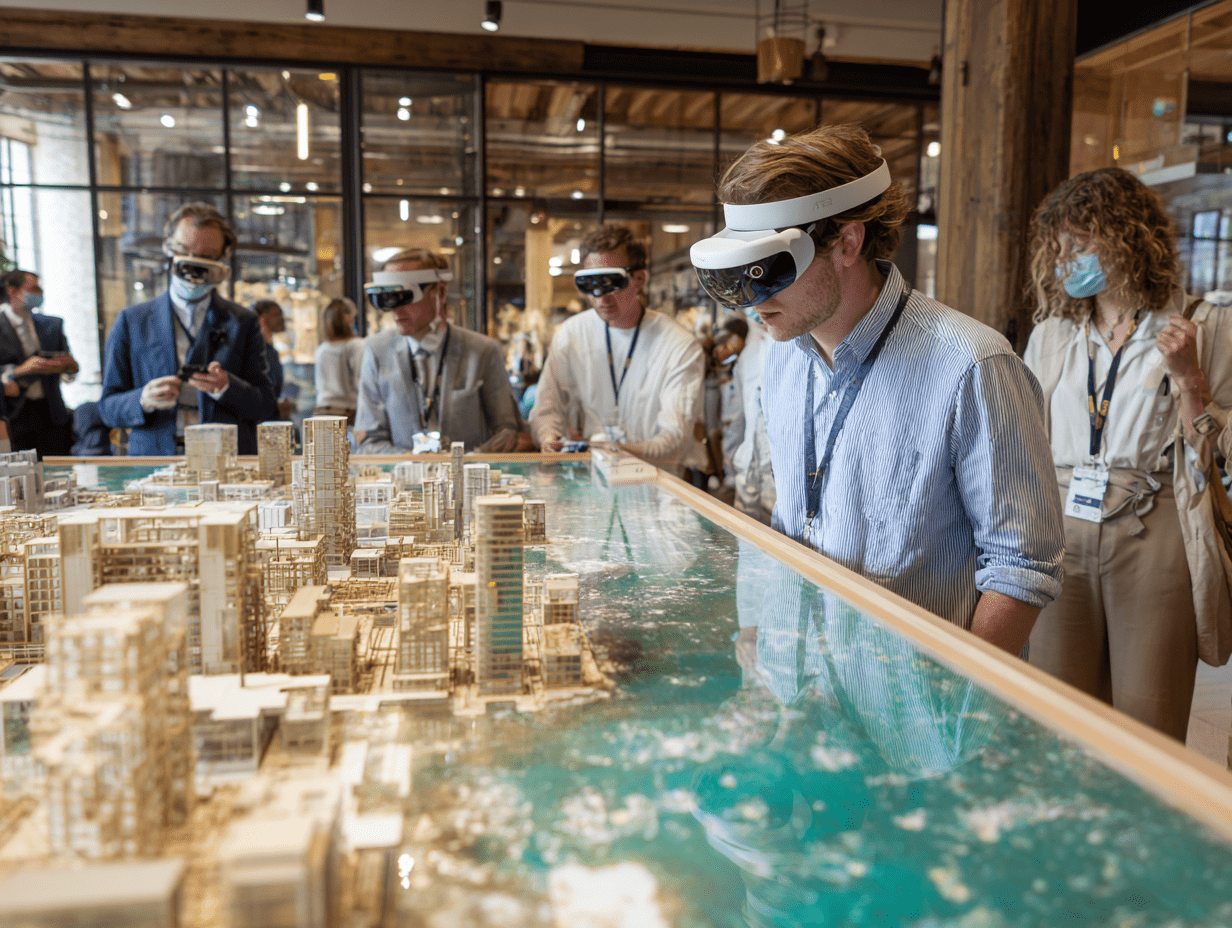- Home
- Articles
- Architectural Portfolio
- Architectral Presentation
- Inspirational Stories
- Architecture News
- Visualization
- BIM Industry
- Facade Design
- Parametric Design
- Career
- Landscape Architecture
- Construction
- Artificial Intelligence
- Sketching
- Design Softwares
- Diagrams
- Writing
- Architectural Tips
- Sustainability
- Courses
- Concept
- Technology
- History & Heritage
- Future of Architecture
- Guides & How-To
- Art & Culture
- Projects
- Interior Design
- Competitions
- Jobs
- Store
- Tools
- More
- Home
- Articles
- Architectural Portfolio
- Architectral Presentation
- Inspirational Stories
- Architecture News
- Visualization
- BIM Industry
- Facade Design
- Parametric Design
- Career
- Landscape Architecture
- Construction
- Artificial Intelligence
- Sketching
- Design Softwares
- Diagrams
- Writing
- Architectural Tips
- Sustainability
- Courses
- Concept
- Technology
- History & Heritage
- Future of Architecture
- Guides & How-To
- Art & Culture
- Projects
- Interior Design
- Competitions
- Jobs
- Store
- Tools
- More
Emerging AI Trends for Architects and Interior Designers
Unearth the transformation in interior design & architecture through AI; from Generative AI, VR simulations to Dreamhouse AI. Delve into the advantages, challenges, and educational adaptations brought by AI trends. The article underscores the role of ethical practices in this dynamic progression.

As the digital revolution charges on, it’s impossible to ignore the profound impact of Artificial Intelligence (AI) on various industries. One sector experiencing this transformative wave is the realm of architecture and interior design. With the advent of Generative AI and platforms like ChatGPT, the era of natural language processing that understands human language is upon us, sparking a surge in AI development.
For architects and interior designers, the influx of new terminologies such as machine learning, deep thinking, and spatial computing can seem daunting. Yet, it’s no longer a choice but a necessity to embrace these technologies. Leveraging user-friendly AI not only saves time but also enhances client relations. So, let’s dive into the world of AI trends that are reshaping the landscape of interior design and architecture.

Table of Contents
ToggleThe Rise of AI in Interior Design and Architecture
In the continually evolving realms of interior design and architecture, AI has emerged as a revolutionary player. It’s catalyzed significant transformations, unlocking innovative possibilities, and streamlining various processes. Let’s delve deeper into how incorporating AI into these disciplines can offer myriad advantages and reshape conventional workflows.
The Advantages of Integrating AI
For starters, Generative AI serves to enhance personalization within the realm of interior design. This technology analyzes millions of images, styles, and trends, thus aiding designers in refining their concepts and arriving at unique, personalized interiors. Moreover, AI-generated mood boards, color palettes, and style recommendations enable designers to traverse diverse possibilities, mitigating the dread often associated with generating new ideas.
Moreover, AI’s integration doesn’t end at promoting creativity. It provides an upper hand in staying on top of design trends and maintaining a home’s stylish appeal over the years. Consequently, design choices made with AI guidance can likely boast an everlasting appeal.
AI also plays a significant role in VR simulations, enhancing its dynamic nature. Fundamental environmental adjustments, such as changing lighting conditions considering different times of day or natural light variations, become possible in real-time through AI algorithms. These adjustments augment a client’s virtual experience while making space for on-the-spot design modifications.
How AI Is Changing the Workflow
An AI-driven workflow marks a paradigm shift in how designers approach their projects. By responding in real-time to user inputs, AI contributes to an efficient, collaborative workflow. For example, in a VR simulation, as clients explore the virtual space, designers can experiment with various design elements. AI algorithms ensure that these changes integrate seamlessly into the virtual environment. This iterative process helps reduce the necessity for time-consuming revisions in the later project stages, presenting a tremendous advancement over traditional workflows.
Nonetheless, as we hurtle into the future, the balancing act between technological advancement and responsible design practices becomes ever more critical. Grappling with data privacy, preserving the environment, and preventing traditional craftsmanship from becoming obsolete are all challenges that face us as designers. Experience and research guide us to shape this path, acknowledging AI’s potential and embracing it while maintaining an ethical, conscientious approach.
Remember, it’s no longer about using AI as a tool; it’s about integrating AI into the fabric of our processes. AI is not just the future of interior design and architecture; it’s the present, and it’s here to stay.

Key AI Trends Shaping the Industry
In the rapidly evolving landscape of interior design and architecture, certain AI-driven trends have emerged as game-changers. These trends are not only reshaping the industry, but also offering exciting opportunities for innovation and growth.
The Adoption of Generative Design
At the cutting edge of these trends is the adoption of Generative Design. This AI-driven approach relies on specific design constraints and parameters, allowing the AI to generate and optimize numerous design solutions. For instance, Autodesk Generative Design illustrates this approach splendidly, deploying advanced AI algorithms to generate design options. Over the past year, the platform has seen significant user adoption, indicating growing preference and acceptance of such futuristic design tools within the industry.
AI-Enhanced Visualization and Simulation
AI is playing an increasingly critical role in enhancing visualization and simulation within the field of interior design and architecture. With an impressive 25% increase in user engagement, this app exemplifies how AI facilitates effective collaboration and makes ideation more efficient. Similarly, AI-powered services like Getfloorplan and Planner 5D ease the creation of detailed 2D and 3D floor plans, including 360° virtual tours, revolutionizing the way designers and architects visualize and plan spaces.
Personalized and Data-Driven Design
AI enables more personalized and data-driven design by offering customized solutions based on user preferences and behaviour. The rising demand for such designs drives the growth of generative AI in the market, fostering unparalleled customizability in architectural and design projects. As AI algorithms become increasingly prevalent, designers and architects can make more precise and client-tailored choices, creating spaces that are truly unique and deeply satisfying for the end-user. As a matter of fact, these trends underscore the irreplaceable role AI currently plays in the interior design and architecture industry, and hint at the exciting possibilities for AI to shape the industry’s future.

The Impact on Efficiency and Creativity
Continuing from the previous discussion, let’s delve deeper into how Artificial Intelligence (AI) improves the design processes’ efficiency and sparks creativity in both the interior design and architecture sectors.
Streamlining Design Processes with AI
AI, specifically machine learning, has ushered in a new era of design optimization and personalization, redefining the concept of efficiency in the design field. One evident application lies in the automation of mundane tasks, freeing up designers for more complex and creative tasks. Machine learning algorithms can analyze vast amounts of data, including user preferences, cultural trends, and historical design elements. These algorithms generate personalized design recommendations, ensuring a more efficient, data-driven design process. The influence here extends from idea generation, designing, and prototyping, to even managing resources; the design process witnessed a substantial reduction in time and cost due to AI.
For architects, implementation of AI in design solutions, such as generative design, takes efficiency to another level. The software can quickly generate countless design alternatives based on preset parameters, another example of AI’s contribution to the optimization of design creation and production.
Fostering Creative Solutions Through AI Insights
Contrary to some opinions, AI isn’t a threat to the creativity of interior designers and architects; rather, it’s a valuable creative assistant that enhances their work. AI provides a broader spectrum of design options, serving as a catalyst for innovative ideas.
Virtual design assistants, powered by AI, prove to be a significant boon in the design process. They utilize AI technology and algorithms to analyze user-specific data, generating custom recommendations that best fit the desired aesthetics. This leads to designs tailor-made for an individual’s tastes, providing a personalized touch that’s fast becoming the norm in the industry.
Emphasizing on the designers’ perspective, it’s evident that they now leverage AI capabilities to explore innovative ideas and provide clients with a broader range of design options. However, the human element retains its importance. Designers bring their unique creativity, human touch, and cultural sensitivity to the process, making AI a supportive tool rather than a replacement.
The combination of human creativity and AI explores new possibilities in interior design and architecture like never before, thus representing a paradigm shift in these industries.

Ethical and Practical Considerations
Navigating Privacy and Data Bias in AI Applications
AI applications in interior design bring about a host of ethical considerations, primarily centered on data privacy and bias. As AI systems rely on extensive data collections to function effectively, questions around data handling, storage, and user privacy become paramount. Data privacy concerns arise from how AI systems collect, process, and store personal data. More specifically, automated home systems could potentially access sensitive information about residents’ lifestyle and routine patterns, raising significant privacy concerns.
Further, AI systems might inherit the biases embedded in their training datasets. In the context of interior design, such biases could unintentionally influence the AI’s recommendations, potentially crafting designs that reflect a distorted representation of user preferences. Combating these biases requires taking deliberate steps toward transparency in data collection and algorithmic processes.
Balancing AI Tools with Human Expertise
The integration of AI in interior design doesn’t discount the vital role of the human touch. AI tools, with their efficiency and data-driven insights, have indeed streamlined various aspects of the design process. However, they can’t replace the nuanced understanding, empathy, and creativity inherent in human designers. Rather than viewing AI as a threat, it’s better perceived as a tool that augments human capabilities.
While AI can analyze huge data sets to create personalized designs and predict trends, it’s the designers’ role to infuse these recommendations with artistic flair. The fusion of human creativity with AI’s capabilities paves the way for a new era of interior design, one that is both technologically advanced and deeply sensitive to human needs and aesthetics.
The key lies in striking the right balance – leveraging AI tools for efficiency and data-insights while preserving the craftsmanship, intuition, and empathy that sets human designers apart. Thus, notwithstanding technological advancements, the human element in design remains irreplaceable.
Preparing for the Future
The Importance of Adapting to AI Innovations
If you’re a designer or architect, recognizing the value of AI in your field shouldn’t be underestimated. It’s rapidly reshaping the ways in which designs are created and how space planning is executed, considerably accelerating the designing process. With tools like AI Room Planner, concepts for interior designs can be generated seamlessly. This tool allows users to upload photos of a space, and it yields a rendered image of the same space in a different style. It offers a variety of room options, including living room, bedroom, kitchen, attic and outdoor areas, along with 16 unique design styles. Embracing such advancements ensures you stay relevant and competitive in the ever-evolving technology-driven design industry.
Furthermore, the arrival of AI brings a possibility of personalized design solutions. The AI-powered virtual staging tool, Dreamhouse AI, provides users with free, unique interior design ideas for any type of room according to individual tastes and preferences. Harnessing the power of these tools compounds your abilities to meet client expectations more accurately.
AI’s Role in Education and Career Development for Designers
As AI continues to advance, it leaves a lasting footprint on the field of education and career development for designers and architects. Universities such as Marymount are offering specific programs that focus on the convergence of AI and interior design, equipping students with advanced knowledge and skills in interior design practices. These programs often explore areas like AI, machine learning, among others.
These offerings aren’t restricted to students only. Existing professionals in the field can benefit significantly from these courses. They’ll receive upgraded skills, keeping them at the forefront of technological advancements. This serves as another affirmation of the importance of continuous learning and staying ahead of trends. Be it a student or a professional, such courses fortify one’s skills and ensure they are prepared for the industry’s digital future.
As we embrace this innovative era, it’s critical to remember that while AI can crunch numbers and analyze data with precision, aspects of the craft that require human discernment and creativity remain important as ever. The synergy of human creativity and AI will undoubtedly pave the way for the future of interior design and architecture. We’re looking forward to exploring this exciting frontier.

Conclusion
Incorporating AI in interior design and architecture illuminates the industry’s path forward, paving the way for transformative possibilities. From generative design to VR simulations, these AI advancements have the potential to redefine our design approaches. But embracing innovation also necessitates the understanding and addressing of ethical considerations it brings, such as data privacy and displacement of traditional craftsmanship.
As AI is becoming an integral part of our industry, we encounter certain challenges. One prominent predicament is job displacement due to the increased automation in design processes. As AI solutions continue to emerge, concerns about human designers becoming obsolete loom. This, however, is an aspect requiring comprehensive exploration before forming conclusive statements.
What can’t be ignored is the potential of AI to enhance and simplify the interior design process. With AI tools like an AI Room Planner or Dreamhouse AI, designers can generate wide-ranging design concepts and personalized solutions with improved efficiency. This amalgamation of AI innovation with design comes with an additional advantage – it makes for a seamless and enhanced user experience while keeping data handling transparent and secure.
Despite the pressing challenges, an undeniable truth is the potential of AI to revolutionize the future of design education and professional development. Universities now recognize the pivotal role of AI in shaping the future designers and architects, providing courses that merge AI and design. Incorporating AI-based tools in education not only prepares the designers for the future but also helps them adapt to the changing technological landscape.
An optimal balance of AI innovation and ethics can help mitigate the negative impact of technological advancement on traditional craftsmanship and environmental sustainability. By navigating these challenges, we can move closer to a better tomorrow that values both innovation and human skill in interior design and architecture. The future, therefore, is not just about embracing AI and technology, but also about merging them with ethical design practices.
Submit your architectural projects
Follow these steps for submission your project. Submission FormLatest Posts
AI Tools Reshaping Architectural Modeling Processes
AI tools in architectural modeling: see how generative massing, BIM automation, and...
Best AI Tools for Architects: Make Architectural Design Easier
Artificial Intelligence is reshaping architecture. Discover the best AI tools that help...
Revolutionizing Spaces: AI in Architecture of the Future
Discover how artificial intelligence is reshaping the future of architecture in this...
Transforming AI in Architectural Design: Boosting Creativity and Efficiency for the Future
Discover how artificial intelligence is revolutionizing architectural design in our latest article....












Leave a comment